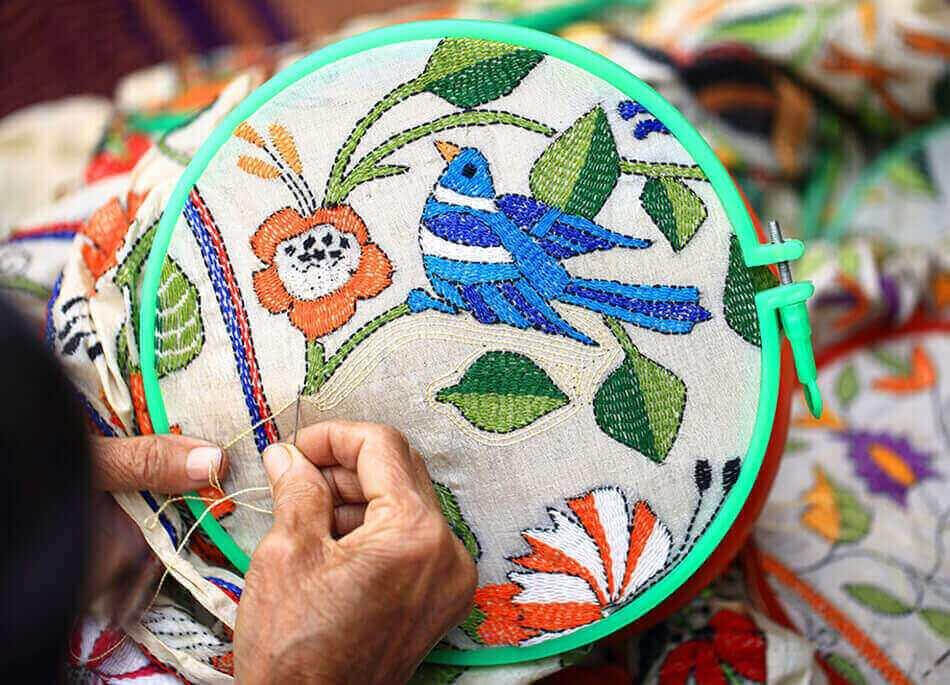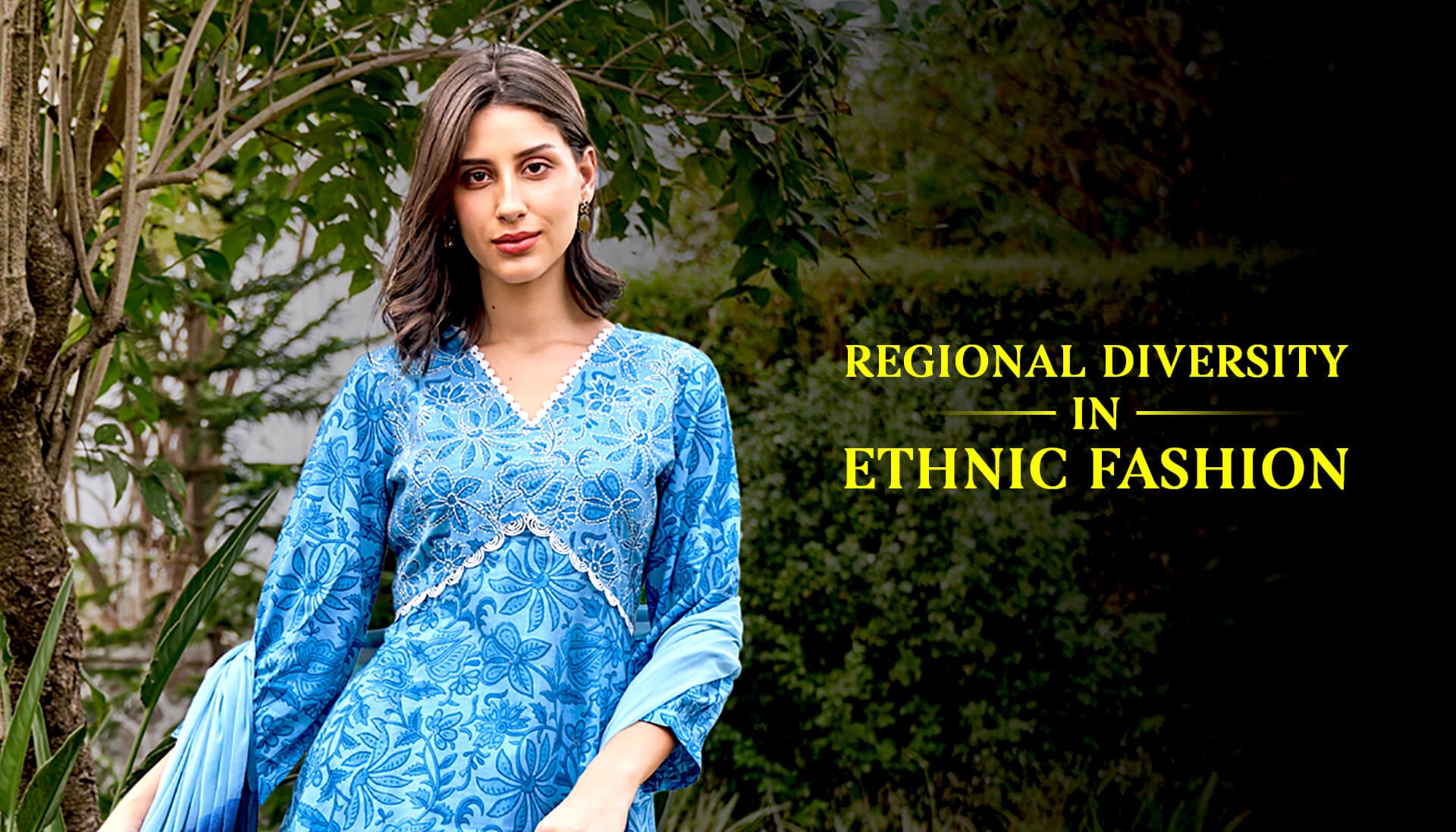A Closer Look At Traditional Embroidery Techniques
The world of traditional embroidery is a mesmerizing journey through time, culture, and unparalleled craftsmanship. Each delicate stitch, every intricate pattern tells a story of heritage, artistic expression, and the rich tapestry of diverse cultures. In this exploration, we take a closer look at traditional embroidery techniques from around the world, unraveling the threads that connect the past to the present, celebrating the artistry that transcends generations.
Embroidery as Cultural Expression
Embroidery, dating back thousands of years, has been a means of expressing cultural identity and stories. Different regions and communities have developed distinct styles, creating a visual language that speaks volumes about their history, beliefs, and way of life.
- Indian Zari Embroidery: The Art of Gilded Elegance
In India, the art of zari embroidery has adorned fabrics for centuries. Originating from Persian influences, zari involves weaving metallic threads, often gold or silver-coated, into intricate patterns. Seen prominently in bridal wear, sarees, and traditional garments, zari embroidery is a symbol of opulence, luxury, and timeless elegance. The delicate detailing in zari work reflects the meticulous craftsmanship passed down through generations.

- Chinese Silk Embroidery: A Symphony of Colours and Symbolism
Chinese silk embroidery is a living testament to the country's rich cultural heritage. Dating back to the Han Dynasty, this embroidery technique involves using silk threads to create intricate designs on fabric. Each color and motif carries symbolic significance, conveying messages of good fortune, prosperity, and happiness. Chinese silk embroidery is not merely a craft; it is a visual language that communicates cultural values and aspirations.

- Japanese Sashiko: Stitching Stories of Resilience
In Japan, sashiko embroidery has its roots in the Edo period. Originally a form of mending and reinforcing fabric, sashiko has evolved into a distinct art form. The white stitches on an indigo background create geometric patterns, telling stories of resilience and endurance. Sashiko reflects the Japanese philosophy of "mottainai," emphasizing the value of reusing and appreciating every thread.

- Mexican Otomi Embroidery: Vibrancy in Every Stitch
Otomi embroidery from Mexico is a celebration of vibrant colors and indigenous traditions. The intricate patterns depict flora, fauna, and mythological symbols. Traditionally done by the Otomi people, this embroidery style is deeply rooted in their cultural beliefs, connecting the present generation to the wisdom of their ancestors. The vivid hues and bold designs make Otomi embroidery a visual feast that mirrors the vivacity of Mexican culture.

Preserving Heritage through Needle and Thread
One of the remarkable aspects of traditional embroidery is its role in preserving cultural heritage. The meticulous techniques, passed down through generations, serve as a tangible link to the past. As artisans continue to practice these age-old methods, they contribute to the continuity of cultural narratives, ensuring that the stories woven into each stitch are not forgotten.
- Crewel Embroidery in Kashmir: A Timeless Craft of Paradise
Crewel embroidery from the paradise of Kashmir is a fine example of how tradition can be a living, evolving art form. With roots dating back to the 17th century, crewel embroidery uses chain stitches to create intricate motifs on woolen fabrics. Often depicting the breathtaking landscapes of Kashmir, this embroidery style is a testament to the region's natural beauty and the artistic prowess of its people.

- Hungarian Matyó Embroidery: Blossoming Folk Art
In Hungary, Matyó embroidery is a distinctive folk art characterized by vibrant floral motifs. Dating back to the late 19th century, this embroidery style is often found on traditional costumes worn during celebrations. Matyó embroidery is not just an embellishment; it is a form of cultural expression, with each flower and color carrying symbolic meaning and reflecting the spirit of the Matyó community.

Modern Interpretations and Global Influence
While traditional embroidery techniques have deep historical roots, they are not static. Modern designers and artisans continue to reinterpret these techniques, infusing them with contemporary aesthetics. The fusion of traditional craftsmanship with innovative design not only keeps these art forms alive but also introduces them to new audiences around the world.
- Contemporary Kantha Embroidery: Stitching Stories of Empowerment
Originating in the Indian subcontinent, Kantha embroidery has found a place in contemporary fashion. Traditionally used to repurpose old garments into quilts, modern Kantha embroidery has evolved into a unique form of storytelling through stitches. Artisans often depict narratives of empowerment, social issues, and cultural heritage, transforming this traditional technique into a canvas for modern expression.

- Brazilian Embroidery: From Traditional Roots to Global Runways
Brazilian embroidery, influenced by European techniques introduced during colonization, has become a vibrant form of artistic expression. Richly textured and often incorporating three-dimensional elements, Brazilian embroidery has transcended traditional boundaries and found its way onto global runways. This fusion of traditional craftsmanship with modern design sensibilities showcases the adaptability and timelessness of embroidery as an art form.

Embroidery as a Cultural Bridge
Beyond its aesthetic appeal, embroidery serves as a cultural bridge, connecting people across continents. The exchange of techniques, designs, and inspirations has led to a global appreciation for traditional embroidery, fostering a sense of shared humanity through the language of stitches.
- Cross-Cultural Influence in Palestinian Tatreez Embroidery
Palestinian Tatreez embroidery is a testament to the resilience of a people. Characterized by intricate geometric patterns and vibrant colors, Tatreez has become a symbol of Palestinian identity. In recent years, cross-cultural collaborations have brought Tatreez to the forefront of global fashion, amplifying its cultural significance and providing economic opportunities for Palestinian artisans.
- The Renaissance of Ukrainian Vyshyvanka: A Symbol of National Pride
Vyshyvanka, traditional Ukrainian embroidery, has experienced a renaissance in recent years. Once a symbol of rural life, Vyshyvanka has become an emblem of national pride and identity. The intricate patterns and symbolic motifs have captured the attention of global fashion designers, turning Vyshyvanka into a cultural ambassador that transcends borders.
A Stitch in Time, Connecting Past and Future
Traditional embroidery techniques are not merely artistic endeavours; they are living, breathing expressions of culture, history, and identity. As we take a closer look at the stitches that have withstood the test of time, we witness the resilience of human creativity and the profound impact of these threads on our shared global heritage.
In every delicate twist of the needle, in every vibrant hue meticulously chosen, and in every carefully crafted motif, there lies a story waiting to be told. Traditional embroidery is a testament to the beauty of diversity, the continuity of tradition, and the universal language of art that transcends boundaries. As we appreciate the craftsmanship of traditional embroidery, let us also celebrate the hands that weave these narratives, connecting the threads of the past to the fabric of our shared future.
FAQs
- What is traditional embroidery, and why is it significant?
Traditional embroidery is a craft that involves decorating fabric using needle and thread. It holds cultural significance as a means of expressing heritage, storytelling, and preserving cultural identity through intricate designs and patterns.
- How does Indian Zari embroidery differ from other embroidery techniques?
Indian Zari embroidery involves weaving metallic threads, often gold or silver-coated, into intricate patterns. It is known for its opulence, luxury, and timeless elegance, often seen in bridal wear and traditional garments.
- What is the cultural symbolism behind Chinese Silk Embroidery?
Chinese Silk Embroidery utilizes silk threads to create intricate designs with symbolic meanings, conveying messages of good fortune, prosperity, and happiness. Each color and motif hold cultural significance.
- What distinguishes Japanese Sashiko embroidery?
Sashiko embroidery originated in Japan as a form of mending and reinforcing fabric. The white stitches on an indigo background create geometric patterns, telling stories of resilience and endurance.
- How does Otomi Embroidery from Mexico reflect cultural traditions?
Otomi embroidery is a celebration of vibrant colors and indigenous traditions in Mexico. The intricate patterns depict flora, fauna, and mythological symbols, reflecting the vivacity of Mexican culture.
- How does Crewel Embroidery from Kashmir showcase the region's natural beauty?
Crewel embroidery from Kashmir uses chain stitches to create intricate motifs, often depicting the breathtaking landscapes of the region. It is a fine example of how tradition can evolve into a living, dynamic art form.
- What is the significance of Matyó Embroidery in Hungarian culture?
Matyó embroidery from Hungary is characterized by vibrant floral motifs, dating back to the late 19th century. It is a distinctive folk art form that reflects cultural expression and is often found on traditional costumes worn during celebrations.
- How do contemporary Kantha Embroidery pieces tell stories of empowerment?
Modern Kantha embroidery has evolved into a unique form of storytelling through stitches. Artisans often depict narratives of empowerment, social issues, and cultural heritage, transforming this traditional technique into a canvas for modern expression.
- What is the role of Brazilian Embroidery on global runways?
Brazilian embroidery, influenced by European techniques, has become a vibrant form of artistic expression. Richly textured and often three-dimensional, it has transcended traditional boundaries and found its way onto global fashion runways.
- How does Cross-Cultural Influence impact Palestinian Tatreez Embroidery?
Palestinian Tatreez embroidery has gained global attention through cross-cultural collaborations. It has become a symbol of resilience and identity, providing economic opportunities for Palestinian artisans and amplifying its cultural significance.
- How has Ukrainian Vyshyvanka experienced a renaissance?
Vyshyvanka, traditional Ukrainian embroidery, has experienced a renaissance and has become a symbol of national pride. Its intricate patterns and symbolic motifs have captured global attention, turning it into a cultural ambassador that transcends borders.
- What does traditional embroidery represent on a global scale?


